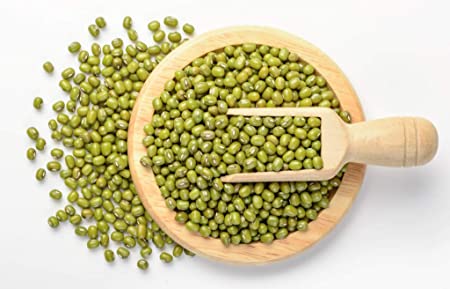
CHICKPEA SEEDS
HSN CODE – 071320 Cultivation in Gujarat
- GJG-3
- GG-5
- PHULE VIKRAM
- GNG-1958
- RVG-204
Botanical Name:- Cicer arietinum(legumes family)
Common Name:- Bengal gram, kidney beans, black beans
Chickpea is one of the most important food legumes in the world. It originated in middle east and is cultivated on large scalein India, Ethiopia, Mexico, Argentina, Chile and Australia. Chickpea is widely appreciated as a health food. Chickpea is of two types, desi and Kabuli. The seeds of desi chickpea are small in size and yellow to dark brown in colour. The grains of kabuli chickpea on other hand are large and attractive and creamish white in colour.
Chickpea, being a winter season crop requires cool climate for its growth and development, while it requires relatively high temperture at maturity. Severe cold and frost at the time of flowering cause flower drop. The optimum temperature for itsgrowth ranges from 15 - 25 C. Soil temperature of 30 C or above adversly affects the nitrogen fixation process by therhizobia. The presence of deep rooted system makes chickpea a preferred crop in dry tracts with annual rainfall of 60-100cm. Areas with moderate rainfall are considered suitable for chickpea cultivation.
| Protein | Carbohydrate | Fat | Calcium | Phosphorus | Potassium | Iron |
|---|---|---|---|---|---|---|
| 17-22% | 63% | 4.5% | 110 | 880 | 390 | 6 |
Chick Peas :
- Chick peas were first grown in Mesopotamia around 75,000 years back. Across the globe, India is major exporter for chick peas worldwide.
- Chick peas are available in two forms either Desi or Kabuli. It may be classified on the basis of shape, thickness, size etc.
- Chick peas also vary in thickness and color from light tan to dark black. Kabuli chick peas are cream or white in color.
- Chick peas are planted according to temperature conditions and soil quality. It is better to take help from experts for better idea.
- Chick peas generally get matured within 3 to 5 months and should be planted in proper soil conditions for good results.
| Counts per Oune | Foreign Matter | Defects | Moisture |
|---|---|---|---|
| 38/40, 40/42, 42/44, 44/46, 58/60, 75/80, 100/110 | 0.20% Max | 04.20 % to 07.20% depending on counts | 10.00% to 14.00% DEPENDING UPON WEATHER |
Uses
- Chickpeas can be used almost in every food item.
- It is also used along with salads and taken as healthy food item.
- Chick peas are enjoyed as desserts or sweets when you are completed with your lunch or dinner.
- Chickpeas can also be converted into powdered form and it can be preserved longer.
- It is taken as essential ingredient for soups and highly popular in US region.
- Desi chick peas are largely consumed in India and south Asia along with variety of food items.
GREEN MUNG BEAN
HSN CODE – 07133100 Cultivation in Gujarat
- IPM 410.3
- RMG-268
- SML-668
Botanical Name:- Vigna radiata
Common Name:- green gram, maash.
Mungbean is a traditional pulse crop of India. It is widely grown in South East Asia, Africa, South America and Australia. In India, Mungbean is grown in all three seasons i.e., Kharif, Rabi andSpring/summer. Among various pulse crops, Mungbean has a unique characteristic of easilyintegrating into any cropping system. In India, mungbean is mainly grown as kharif crop, howeverwith increasing irrigation facitlities and availibility of short duration varieties, its cutltivation inspring/summer season has also picked up. In addition, mungbean is also grown as rabi crops in ricefallow area in the sourthern and coastal regions of the country.
Nutritional value
Mungbean is a nutritious grain legume which constitutes an important source of cerealbased diets throughout India. The nutritive values of mungbean lie in its high andeasily digestable protein. Mungbean seeds contain approximately 23-24% protein, 1.0-1.5% fat, 3.5-4.5% fiber, 4.5-5.5% ash and 62-65% carbohydrates on dry weight basiswith sprouting there is an increase in thiamine, niacin and ascorbic acidconcerntration. Lysine values are comparatively high which make mungbean proteinan excellent complement to rice in term of balanced human nutrition. It is mostlyconsumed as dal, curries, soup and in preparation of sweets and snacks. Thegerminated seeds have nutritional value comparable to asparagus or mushroom.
Packing size – 25 kg. (customize packing available as per buyers requirement)

